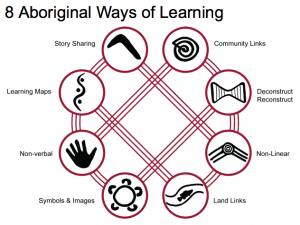2010 Report on the Status of BC First Nations Languages
Language is at the core of our identity, members of a family and nations; it provides the underpinnings of our relationship to culture, the land, spirituality, and the intellectual life of a nation.
According to this report by the First People’s Council, a provincial Crown corporation focused on the status of First Nations language, arts and culture as well as support for First Nations communities trying to recover and sustain their heritage, 60% of First Nations languages in Canada are indigenous to British Columbia. Out of the 32 distinct languages and 59 dialects in BC, all are considered to be endangered with 8 being severely endangered, 22 nearly extinct and 3 already extinct.
Fluent First Nations language speakers comprise only 5.1% of the population in 204 BC First Nations community and that minority percentage continues to dwindle. 52% the of these speakers are over the age of 65. The sharp decline in language learning over the last 100 years can be largely attributed to the aggressive assimilation policies enacted by the government and carried out in residential schools.
With the looming threat of First Nations languages potentially becoming extinct, the urgency for revitalization projects has come to the forefront. While language learning within schools is not yet sufficient to effect substantial change, it is gaining momentum as First Nations communities in BC know that language is an invaluable source of indigenous knowledge and cultural identity that can contribute greatly to an individual’s and community’s healing process. The numbers of language learners is steadily increasing as new resources are developed. The First People’s Councils also calls on First Nations communities to welcome collaboration with each other to maximize the use of available resources and the Canadian government to commit to protecting Aboriginal language and culture through legislation so language revitalization and sustainability become a reality for BC’s First Nations languages.
